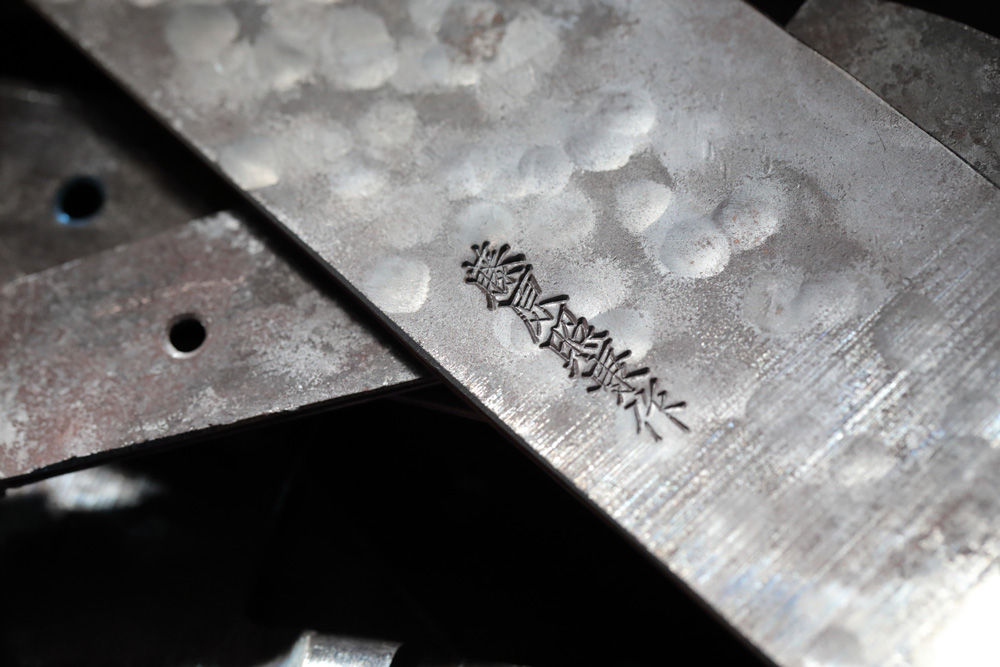- HOME
- About Us
- Swordsmith Blog
- The Origin of the Name “Deba Knife”
About Us

The Origin of the Name “Deba Knife”
A Story Rooted in Japanese Culinary Culture
The Deba knife is an essential tool in Japanese cuisine. Its name carries stories rooted in the fishing towns of Sakai and the food culture of Edo. In this article, I’ll introduce the origins and history of the name “Deba,” along with the spirit of craftsmanship that we at TERUYASU FUJIWARA EDGED TOOL CRAFT continue to uphold.
Table of Contents
The History of the Deba Knife Born in Sakai
It is said that the Deba knife originated in Osaka’s Sakai during the Edo period. As Edo’s food culture developed, a specialized blade was needed to handle whole fish, including bones, while keeping them fresh. Sakai’s blacksmiths answered this need by creating the Deba knife.
There are several theories about the origin of its name. Some say it comes from the blade’s thick, protruding shape (deppari in Japanese), while others believe it is linked to the nickname “Deppa (Deba)” of a craftsman involved in its creation. Although no definitive historical records remain, both theories have been passed down through generations. What is certain is that this knife, born in Sakai, became essential to Japan’s fish-based food culture. At TERUYASU FUJIWARA EDGED TOOL CRAFT, we continue forging Deba knives that honor this heritage while meeting modern needs.
A Special Design for Filleting Fish
The Deba knife is thick and heavy, giving it the strength to cut through fish heads and bones with ease. Its single-bevel edge allows precise cuts that follow the bone, producing clean slices perfect for sashimi or simmered dishes. It is truly a knife that symbolizes Japan’s fish-centered food culture.
At TERUYASU FUJIWARA EDGED TOOL CRAFT, we adjust the thickness and blade angle of each Deba to balance the strength needed for bone work with the delicacy required for filleting fish beautifully.
“The First Step to Success” for Chefs
In the training of sushi chefs and Japanese cuisine apprentices, it is often said that the first knife they are entrusted with is the Deba. Mastering the three-piece filleting of a fish is considered an important milestone in being recognized as a professional. For this reason, the Deba knife is also called “the first step to success.”
At TERUYASU FUJIWARA EDGED TOOL CRAFT, many chefs finishing their training purchase their own Deba as a celebration. That single knife becomes a trusted companion marking a pivotal moment in their culinary career.
Deba Knives by TERUYASU FUJIWARA EDGED TOOL CRAFT
Founded in 1870, TERUYASU FUJIWARA EDGED TOOL CRAFT has carried on the tradition of swordsmithing while forging Deba knives suited for modern cooking. Our Deba knives feature a triple-layer structure with high-carbon steel at the core, clad in stainless steel, achieving both sharpness and ease of maintenance.
We offer a wide range of sizes from 105mm to 270mm, allowing chefs and home cooks to choose the ideal Deba for their style of cooking and the size of fish they prepare—from small fish with a 105mm blade to large fish requiring a 270mm blade.
Conclusion
While the exact origin of the name “Deba” remains uncertain, what is clear is that the knife was born in Sakai and has long supported Japan’s fish-based culinary culture. Its thick, heavy design and sharp single-bevel edge make it perfectly suited for filleting fish with precision and beauty.
At TERUYASU FUJIWARA EDGED TOOL CRAFT, we continue to forge Deba knives with
the spirit of ittcho nyukon (一丁入魂), respecting tradition while creating
blades for today’s kitchens. Please visit our official website (https://www.teruyasu.net/)to find
your very own ittcho.
This is Miho from Fujiwara Teruyasu Blade Craftsmanship Customer Support.
FAQ
-
Where did the Deba knife originate?It was created in Osaka’s Sakai during the Edo period. Designed to process fresh fish, even with bones, it became an essential part of Japan’s seafood culture.
-
What is the origin of the name “Deba”?There are two theories: one says it comes from its thick, protruding shape (deppari in Japanese), while another links it to the nickname “Deppa (Deba)” of a craftsman. Although no definitive records remain, both stories have been passed down.
-
Why is the Deba called “the first step to success”?During training, apprentice chefs are often given a Deba first. Mastering the three-piece filleting of fish is a key milestone in being recognized as a professional. That’s why the Deba marks an important step in a chef’s career.


